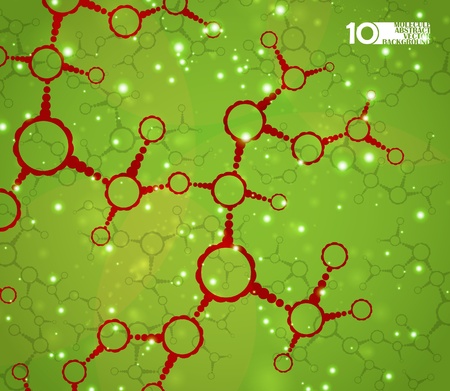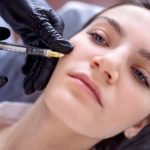1. Understanding Dark Circles: Causes and Common Misconceptions
Dark circles under the eyes are a common concern for many people, but there’s often confusion about what causes them. Some believe they are simply a result of not getting enough sleep, while others think they are caused by aging alone. In reality, dark circles can be influenced by a mix of genetic, lifestyle, and environmental factors. Let’s explore the science behind them and clear up some misconceptions.
What Causes Dark Circles?
Dark circles can develop due to several reasons, including genetics, blood vessel visibility, pigmentation changes, and lifestyle habits. Here’s a breakdown of the most common causes:
| Cause | Description |
|---|---|
| Genetics | If your family members have dark circles, you may be genetically predisposed to having them as well. Some people naturally have thinner skin or more pigmentation around the eyes. |
| Lifestyle Factors | Lack of sleep, excessive screen time, poor diet, smoking, and alcohol consumption can contribute to dark circles by affecting blood circulation and skin health. |
| Aging | As we age, collagen production decreases, leading to thinner skin under the eyes. This makes underlying blood vessels more visible, creating a darker appearance. |
| Pigmentation Issues | Some individuals naturally have more melanin in their skin, which can lead to hyperpigmentation around the eyes. |
| Allergies & Sinus Issues | Nasal congestion can cause blood vessels under the eyes to dilate, leading to a darker appearance. Allergic reactions can also trigger inflammation and puffiness. |
| Sun Exposure | UV rays can increase melanin production and worsen pigmentation around the eyes. |
| Poor Circulation | Inefficient blood flow can make veins under the eyes more prominent, contributing to a darker look. |
Common Myths About Dark Circles
“Dark Circles Only Happen Because of Lack of Sleep”
Poor sleep can make dark circles worse, but it’s not the only reason they appear. Genetics, pigmentation issues, and aging play significant roles.
“Drinking More Water Will Instantly Fix Dark Circles”
Hydration helps keep skin healthy but won’t eliminate dark circles if they’re caused by genetics or pigmentation issues.
“Applying More Eye Cream Will Make Them Disappear”
Certain eye creams can help improve hydration and reduce puffiness, but they cannot completely erase dark circles caused by structural or genetic factors.
“Only Older People Get Dark Circles”
Younger individuals can also develop dark circles due to genetics, allergies, or lifestyle habits like excessive screen time.
The Science Behind Blood Vessel Visibility and Pigmentation
The skin under our eyes is thinner than other areas of the body. When blood vessels beneath this delicate skin become more prominent due to aging or poor circulation, they create a bluish or purplish tint. Additionally, increased melanin production from genetics or sun exposure can lead to brownish discoloration.
The Role of Oxygenated vs. Deoxygenated Blood
The color of dark circles can sometimes indicate their cause. Bluish tones often result from visible deoxygenated blood in veins under thin skin, whereas brownish hues are typically linked to pigmentation issues.
The Impact of Skin Thickness on Appearance
If you naturally have thinner skin under your eyes, blood vessels will be more visible regardless of your lifestyle habits. This is why some individuals seem to have persistent dark circles even when they’re well-rested and hydrated.
Understanding what really causes dark circles is key to finding the right solutions. Now that we’ve explored the science behind them and debunked common myths, let’s move on to effective ways to treat and manage them in the next section.
2. Types of Dark Circles: Identifying the Underlying Issue
Dark circles arent all the same—they come in different types, each with its own causes and treatments. Understanding which type you have is key to finding the right solution. The three main categories of dark circles are pigmentation-based, vascular, and structural.
Pigmentation-Based Dark Circles
These dark circles occur due to excess melanin production, leading to discoloration around the eyes. They are more common in people with darker skin tones and can be caused by genetics, sun exposure, or inflammation.
How to Identify:
- Brown or grayish appearance
- More noticeable in bright light
- No significant change when stretching the skin
Treatment Options:
- Sunscreen: Protects against further pigmentation.
- Topical Treatments: Ingredients like vitamin C, kojic acid, and retinoids can help lighten dark spots.
- Laser Therapy: Targets pigment buildup for a more even skin tone.
Vascular Dark Circles
This type results from poor circulation, thin skin, or visible blood vessels under the eyes. It often appears bluish or purplish and is more pronounced in people with fair skin.
How to Identify:
- Bluish or purplish tint
- Worsens with fatigue or allergies
- Mild improvement when applying cold compresses
Treatment Options:
- Caffeine-Based Eye Creams: Helps constrict blood vessels and reduce puffiness.
- Chemical Peels: Mild peels with lactic acid can improve skin texture.
- Lifestyle Changes: Better sleep, hydration, and reducing alcohol intake can improve circulation.
Structural Dark Circles
This type occurs due to facial anatomy, such as deep tear troughs or loss of fat under the eyes. Shadows form because of the way light hits these hollows.
How to Identify:
- A shadowed appearance rather than discoloration
- No improvement with topical treatments
- Makes under-eye hollows look deeper in certain lighting
Treatment Options:
- Dermal Fillers: Hyaluronic acid fillers can restore volume and reduce shadows.
- Surgical Procedures: Fat grafting or lower eyelid surgery may provide long-term improvement.
- Creams with Peptides: Can help strengthen the skin barrier over time.
A Quick Comparison of Dark Circle Types
| Pigmentation-Based | Vascular | Structural | |
|---|---|---|---|
| Main Cause | Excess melanin production | Poor circulation & visible blood vessels | Anatomy & fat loss under eyes |
| Main Appearance | brown/grayish tone | Bluish/purplish tint | A shadowed look (no discoloration) |
| Treatments | Sunscreen, laser therapy, skin-lightening agents | Caffeine creams, cold compresses, lifestyle changes | Dermal fillers, surgical procedures |
If youre unsure which type of dark circles you have, consulting a dermatologist can help pinpoint the cause and guide you toward the most effective treatment plan.
![]()
3. The Role of Skin Aging and Lifestyle Choices
Dark circles aren’t just caused by genetics—they can also be influenced by aging, lifestyle habits, and external stressors. As we get older, our skin naturally loses collagen and becomes thinner, making the blood vessels beneath the eyes more visible. Additionally, factors like poor sleep, diet, and UV exposure can accelerate dark circle formation.
Aging and Its Impact on Dark Circles
As we age, our skin undergoes several changes that contribute to the appearance of dark circles:
- Loss of Collagen: Thinner skin makes veins more noticeable, creating a darker under-eye appearance.
- Reduced Fat Volume: Fat loss around the eyes can create hollowness, leading to shadowing.
- Poor Circulation: Slower blood circulation can cause blood to pool under the eyes, resulting in a darker hue.
Lifestyle Habits That Worsen Dark Circles
Your daily habits play a significant role in how pronounced your dark circles appear. Below are some common lifestyle factors and their effects:
| Lifestyle Factor | How It Affects Dark Circles |
|---|---|
| Lack of Sleep | Poor sleep leads to dull skin and increased fluid retention, making dark circles more prominent. |
| Poor Diet | A diet lacking in essential nutrients like iron and vitamin K can contribute to discoloration under the eyes. |
| Dehydration | Dried-out skin appears more sunken, emphasizing dark shadows. |
| Sun Exposure | UV rays break down collagen faster, leading to thinner skin and increased pigmentation. |
| Smoking & Alcohol Consumption | Toxins from smoking and dehydration from alcohol worsen skin health, making dark circles more obvious. |
Taking Control: How to Minimize the Effects
The good news is that small lifestyle changes can significantly reduce the appearance of dark circles. Here’s what you can do:
- Prioritize Quality Sleep: Aim for 7-9 hours per night to help your body repair and refresh your skin.
- Energize with a Balanced Diet: Eat foods rich in iron, vitamin C, and antioxidants to improve circulation and skin health.
- Stay Hydrated: Drink plenty of water throughout the day to keep your skin plump and healthy-looking.
- Sunscreen is Your Best Friend: Use SPF daily to protect against UV damage that worsens pigmentation.
- Avoid Smoking & Limit Alcohol: Reducing these habits improves blood circulation and prevents dehydration-related darkness.
Aging is inevitable, but by making mindful choices about sleep, diet, and skincare, you can slow down the progression of dark circles and maintain a brighter, healthier complexion.
4. Medical Treatments and Professional Solutions
If home remedies and skincare products haven’t given you the results you’re looking for, medical treatments may be a great option. Dermatologists and medical professionals offer advanced procedures that can significantly reduce dark circles by targeting their root causes. Here are some of the most effective treatments available:
Laser Therapy
Laser treatments use focused light energy to improve skin texture, stimulate collagen production, and reduce pigmentation under the eyes. Different types of lasers target different concerns:
| Laser Type | How It Works | Best For |
|---|---|---|
| Fractional Laser | Stimulates collagen production and resurfaces the skin | Thin skin, fine lines, and wrinkles |
| Pulsed Dye Laser (PDL) | Targets blood vessels to reduce redness and vascular dark circles | Bluish or purplish under-eye circles |
| Q-Switched Laser | Breaks down excess pigmentation to lighten dark areas | Pigmentation-related dark circles |
Dermal Fillers
If volume loss is causing shadows under your eyes, dermal fillers can help restore a plump and youthful appearance. Hyaluronic acid-based fillers like Juvederm or Restylane are commonly used to fill hollows and smooth out the transition between the lower eyelid and cheek.
Benefits of Dermal Fillers:
- Adds volume to sunken areas, reducing shadowing effect
- Smooths out the tear trough area for a refreshed look
- Provides instant results with minimal downtime
- Treatment lasts 6-12 months before needing a touch-up
Chemical Peels
Chemical peels involve applying a special solution to exfoliate the outer layer of skin, promoting new skin cell growth and reducing pigmentation. Dermatologists often recommend mild peels containing ingredients like glycolic acid or lactic acid for the delicate under-eye area.
The Types of Chemical Peels:
| Chemical Peel Type | Main Ingredient | Effect on Dark Circles |
|---|---|---|
| Mild Peels | Lactic Acid, Glycolic Acid | Evens out skin tone and improves brightness |
| TCA Peels (Medium Depth) | Trichloroacetic Acid (TCA) | Treats deeper pigmentation issues and stimulates collagen production |
| Kojic Acid Peels | Kojic Acid | Mainly targets hyperpigmentation caused by sun damage or genetics |
The Importance of Consulting a Professional
If youre considering any of these treatments, its essential to consult a board-certified dermatologist or cosmetic specialist. They will assess your skin type, the cause of your dark circles, and recommend the most suitable treatment plan for your needs.
No single treatment works for everyone, so combining multiple approaches—such as laser therapy for pigmentation and fillers for volume loss—may provide the best results. Always ensure you receive these procedures from qualified professionals to minimize risks and achieve safe, natural-looking improvements.
5. At-Home Remedies and Prevention Strategies
Dark circles can be frustrating, but the good news is that there are several at-home remedies and prevention strategies to help reduce their appearance. By incorporating proper skincare, staying hydrated, using effective eye creams, and trying natural treatments, you can keep your under-eye area looking fresh and bright.
Hydration: The Key to Healthy Skin
One of the simplest ways to prevent dark circles is by staying hydrated. When your body lacks water, the skin under your eyes can appear dull and sunken. Aim for at least 8 glasses of water a day to keep your skin plump and well-hydrated.
Choosing the Right Eye Cream
A good eye cream can make a significant difference in reducing dark circles. Look for ingredients that target puffiness, pigmentation, and hydration:
| Ingredient | Benefit |
|---|---|
| Caffeine | Reduces puffiness and improves circulation |
| Vitamin C | Brightens skin and reduces pigmentation |
| Hyaluronic Acid | Keeps the skin hydrated and plump |
| Retinol | Boosts collagen production to strengthen under-eye skin |
Natural Remedies for Dark Circles
If you prefer natural treatments, several home remedies can help brighten your under-eye area:
- Cucumber Slices: Place chilled cucumber slices on your eyes for 10–15 minutes to soothe and refresh the skin.
- Cooled Tea Bags: Green or black tea bags contain antioxidants that help reduce puffiness and dark circles.
- Aloe Vera Gel: Apply a thin layer under your eyes to hydrate and calm the skin.
- Coconut Oil: Gently massage a few drops before bedtime to moisturize and improve blood circulation.
Lifestyle Changes for Prevention
Your daily habits play a crucial role in preventing dark circles from worsening. Consider these simple lifestyle adjustments:
- Adequate Sleep: Aim for 7–9 hours of quality sleep each night to avoid tired-looking eyes.
- Sunscreen Protection: UV exposure can cause hyperpigmentation; use an SPF 30+ sunscreen daily.
- A Balanced Diet: Eat foods rich in vitamins A, C, E, and iron to support healthy skin.
- Avoid Rubbing Your Eyes: Excessive rubbing can break delicate blood vessels, making dark circles more prominent.
The Bottom Line: Consistency Is Key
No single remedy will erase dark circles overnight, but with consistent skincare, hydration, and healthy habits, you can gradually improve their appearance. Find what works best for your skin type and stick with it for long-term results.


